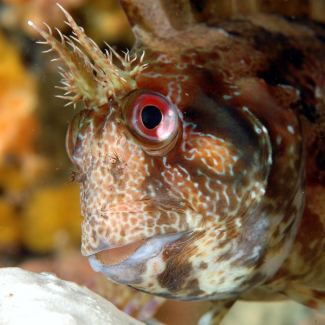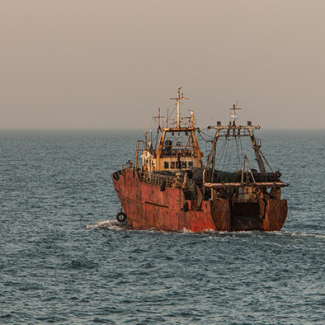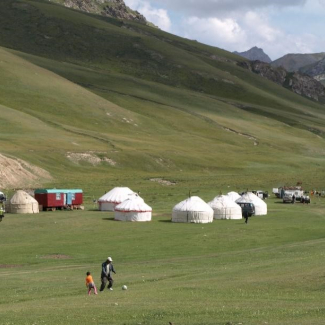
The Ice Memory operation saved Arctic climate heritage after an expedition endangered by unexpected meltwater
The Ice Memory Foundation calls for a rapid action by the international community to save the memory of the world's glaciers.
Despite obstacles posed by unexpected high water content in the snow layers and extreme weather conditions, an international team of scientists was able to drill three deep ice cores on Holtedahlfonna, one of the largest and highest glaciers in the Svalbard Archipelago. This successful operation should ensure the analysis and preservation of a precious Arctic climate archive. Today, operations will begin to safely transfer people, ice cores, and equipment from the remote camp at 1,150 metres altitude to the research station of Ny-Ålesund, 80 kilometres distant. Those activities are expected to last a couple of days, bringing the total operation’s duration to 23 days.
Led by the Institute of Polar Sciences of the National Research Council of Italy (CNR) and involving scientists from the French National Centre for Scientific Research (CNRS), Norwegian Polar Institute (NPI), Ca’ Foscari University of Venice, and the University of Perugia, the ice core drilling mission is almost achieved. The 3 collected ice cores represent an important scientific and cultural heritage in the current context of strong Arctic warming.
Two of the samples will be crucial to better understand climate change in a region where impacts are going four times faster than the global average. Furthermore, the Ice Memory Foundation will preserve one of the ice cores for centuries to come at the dedicated Ice Memory sanctuary in Antarctica. Future generations of scientists will thereby have access to high-quality ice cores to study new tracers related with the past environmental conditions of our planet and to anticipate future changes, long after the glacier will have disappeared due to global warming.
First tentative: a hard fight against unexpected meltwater, under very bad weather conditions
The team had set up camp at an altitude of 1,150 meters in one of the northernmost places of Arctic lands (latitude 79.15 North) on the 4th April and had been struggling against the very bad weather conditions for a few days. In very strong wind (-40°C temperature perceived due to wind chill), the team was ready to start drilling on Saturday 8th April. They started the first deep drilling and collected the first samples. While drilling at 24.5 meters in depth, liquid water appeared in the hole. “Seeing all that water into the glacier gave us the clearest evidence yet of the effects that dramatic climate change is having in the Arctic”, tells Daniele Zannoni, Ca’ Foscari University of Venice, one of the drillers.
“Since 2005, all radar observations showed us the presence of a perennial aquifer located around the central line of the glacier. The previous drilling on the Holtedalhfonna did not encounter meltwater, as so we thought this year - explains Jean-Charles Gallet, snow physicist at NPI and coordinator of the expedition’s logistics. “We drilled almost at the edge of the glacier, on sloped terrain. There, we did not expect to find such an extended, abundant and saturated aquifer, at the end of winter”. This expedition is therefore adding an unprecedented puzzle tile to the knowledge of the Arctic ice cap dynamics and impacts of climate change. Glaciers are not only dramatically losing their mass, but also their cold content.
“Here, too, among the Arctic glaciers of the Svalbard Islands, the importance and urgency of the goals envisioned by the Ice Memory Foundation appear dramatically evident. This aquifer appears particularly extensive such that it produces a constant flow of water within the core hole of about 2 L/min“, comments Jacopo Gabrieli, CNR, the deputy expedition leader.
The turning point: moving to another icefield dome
Unfortunately, the pressure exerted by the amount of water that poured into the drill hole damaged two driller motors. The risk of damaging all the available motors was so high, that scientists decided to move the drilling dome and the driller to a new site on a local ice dome on the Dovrebreen glacier that feeds the Holthedalhfonna ice field, 150 meters distant from the initial site, 13 meters higher in altitude, hoping not to intercept the same amount of melted water into the firn. “In the new site, according to radar measurements, the ice depth was expected to be lower than in the previous site - explains Andrea Spolaor, ISP-CNR, expedition leader - However, there is no evidence suggesting that much shorter ice cores would mean an equally shorter climate record”. Transferring all the drilling equipment during another storm was challenging, but the team succeeded and drilling operation resumed on 12th April. With no water or other major obstacles in the ice cap, the team managed to drill an ice core down to bedrock in a couple of days, reaching a depth of 73.89 metres into the glacier. The second ice core was completed on Sunday 16th April. The team also decided to retrieve a third ice core, doubling the samples immediately available for the analysis. “Despite all the difficulties, we kept the morale high and we stayed focused on our objectives - says Catherine Larose, CNRS - because we had clearly in mind the fundamental importance of those ice core samples for the science of today and tomorrow”.
From the extreme cold to dangerous warm conditions
During the last weekend, the temperature rose to -3° C at the camp. A warm extreme that brought rain at Ny-Ålesund station, causing dangerous water streams in the last segment of the path from the camp to the village. “We were transferring ice cores to Ny-Ålesund with sledges and two snowmobiles - recalls Fabrizio de Blasi, CNR researcher - when we got stuck in a stream created by rain and melted snow. It took us three hours of work and the support of colleagues to bring the precious cargo to safety”. To avoid the rest of the team running into the same obstacle, scientists decided to wait a few days for the return of colder temperatures before continuing the dismantling of the camp and the recovery of samples and equipment. During all the expedition, two scientists, Federico Scoto, researcher at CNR, and David Cappelletti, professor at the University of Perugia, were based at the “Dirigibile Italia” research station in Ny-Ålesund, ensuring technical and logistical support to the team on the remote camp.
The Ice Memory Foundation calling for international support
The Ice Memory Foundation, which collects, saves and manages ice cores from currently endangered glaciers to hand them over to the next generations of scientists for decades and centuries to come, strongly calls for action with the ice core research community. “As alarming are these situations in Arctic, in Europe and elsewhere on the planet, we do need now from the researchers to contribute rapidly to collect samples from endangered glaciers or to save in Antarctica already collected ice cores, as to preserve these very precious data in the Ice Memory sanctuary in Antarctica”, calls Carlo Barbante, paleoclimatologist, Vice Chairman of the Ice Memory Foundation, director of the CNR’s Institute of Polar Sciences, professor at Ca’ Foscari University of Venice.
For Anne-Catherine Ohlmann, director of the Ice Memory Foundation “Ice Memory is a cross-generational initiative that engages us all today: scientists, philanthropists, international organisations... and will benefit our children and our children's children. If we lose archives like this, we will lose the memory of human alteration of the climate. We must all work together to safeguard this archive for future generations. We call on nations to cooperate with their scientists, to facilitate access to their glaciers, so that our generation can offer this precious legacy to the humanity of tomorrow”.
The Ice Memory Sanctuary in Antarctica: 300m2 of storage at Concordia Station in 2024-2025
A dedicated snow cave is currently under construction at the French-Italian Concordia Station, the only international research station on the Antarctic Plateau. Operated by the Italian Antarctic Research National Program (PNRA) and the French Polar Institute, the Concordia Station allows natural storage at -50°C and offers a site which will cover a surface area equivalent to 300 m2.
The first cave should be available for the first Ice Memory cores in 2024-2025 and will offer solutions to major challenges, despite the added complexity of transporting to Antarctica, this strategic choice is essential for several fundamental reasons:
- Guaranteed long-term preservation of the samples using 100% “natural” storage with no energy consumption required for refrigeration, thereby protecting the precious samples from any risk of disrupted refrigeration (technical problems, economic crisis, conflict, acts of terrorism, etc.).
- Structured management of these unique samples, combined with restrictive Antarctic logistics that prevent easy access to the cores.
- Storage in a polar region managed via the Antarctic Treaty - signed by the world’s major nations, and for which territorial claims are frozen.
—-------------------------
About:
Team members:
- Andrea Spolaor, Expedition leader, Paleoclimatologist & Snow chemist, ISP-CNR - Italy
- Jacopo Gabrieli, Glaciologist, ISP-CNR - Italy
- Catherine Larose, Microbiologist, CNRS - France
- David Cappelletti, Chemist, University of Perugia - Italy
- Victor Zagorodnov, Ice cores driller, Cryosphere Research Solutions LLC - USA
- Fabrizio de Blasi, Glaciologist, ISP-CNR - Italy
- Daniele Zannoni, Driller, Ca’ Foscari University of Venice - Italy
- Jean-Charles Gallet, Snow Physicist, NPI - Norway
- Federico Scoto, Snow Chemist, ISAC-CNR - Italy
- Paolo Conz, Mountain guide - Italy
- Riccardo Selvatico, Photographer & videomaker - Italy
The Ice Memory Foundation was created by 7 scientific institutions: University Grenoble Alpes, CNRS, French National Research Institute for Sustainable Development - IRD, French Polar Institute in France, Ca’ Foscari University of Venice, CNR in Italy, Paul Scherrer Institute in Switzerland and is sheltered by the University Grenoble Alpes Foundation. Major donors are: Fondation Didier et Martine Primat, Fondation Albert 2 de Monaco and Thermo Fisher Scientific.
The expedition is part of the SENTINEL project (The impact of sea ice diSappearance on highEr North aTlantic clImate and atmospheric bromiNe and mErcury cycLes), funded by the Arctic Research Program (PRA) of the Italian Ministry of University and Research. The expedition is led by the Institute of Polar Sciences of the National Research Council of Italy (Cnr) and involves scientists from the French National Centre for Scientific Research (Cnrs), Norwegian Polar Institute, Ca’ Foscari University of Venice, and the University of Perugia. Karpos, Aku, and Polibox are the expedition’s technical sponsors.
—-------------------------
ice-memory.org
PRESS ROOM - FREE PHOTOS & VIDEOS
https://bit.ly/43Id2r4
YOUTUBE - SANCTUARY IN ANTARCTICA
Where will be stored the Ice Cores
How do we build the Ice Cave
DIGITAL & SOCIAL MEDIA
Follow from Ice Memory expedition #IceMemory via a dedicated log book on LinkedIn: https://www.linkedin.com/company/ice-memory-foundation I TW @IceMemory_ I FB https://www.facebook.com/ProtectingIceMemory


